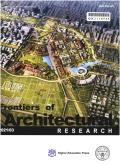The appropriation of autopoiesis in architecture
IF 3.6
1区 艺术学
0 ARCHITECTURE
引用次数: 0
Abstract
This study investigates the merits of the cross-disciplinary appropriation of the theory of autopoiesis in Patrik Schumacher's The Autopoiesis of Architecture. In this two-volume work, Schumacher builds upon Luhmann's sociological adoption of Maturana et al.’s biological theory of autopoiesis. This lineage of repeated appropriation raises questions about the merits of the cross-disciplinary appropriations of natural-scientific theory in architecture in general and the appropriation of autopoiesis in architectural theory in particular. Specifically, what are the merits of Schumacher's appropriation of the theory of autopoiesis? In this article, we develop and apply a text analysis method drawing on discourse analysis, close reading, visual interpretation, and “inference to the best explanation” to analyse a set of three pertinent samples from The Autopoiesis of Architecture. Our analysis, using previously established categorisations of language use and merits of theory appropriation, shows that Schumacher employs various modes of language use in The Autopoiesis of Architecture to reference both prior instances of autopoiesis. These ambiguities serve to achieve merits that, in many cases, seem to benefit the author rather than his readers.
自创生在建筑中的运用
本研究探讨了帕特里克·舒马赫的《建筑的自创生》中自创生理论的跨学科挪用的优点。在这两卷的工作,舒马赫建立在鲁曼的社会学采用Maturana等人的自创生的生物学理论。这种反复挪用的谱系提出了关于自然科学理论在建筑中的跨学科挪用的优点的问题,特别是在建筑理论中的自创生挪用。具体来说,舒马赫挪用自创生理论的优点是什么?在本文中,我们开发并应用了一种基于话语分析、细读、视觉解读和“最佳解释推理”的文本分析方法来分析《建筑自创生》中的三组相关样本。我们的分析使用了先前建立的语言使用分类和理论运用的优点,表明舒马赫在《建筑自创生》中使用了各种语言使用模式来参考之前的自创生实例。在许多情况下,这些模棱两可的观点似乎有利于作者而不是读者。
本文章由计算机程序翻译,如有差异,请以英文原文为准。
求助全文
约1分钟内获得全文
求助全文
来源期刊

Frontiers of Architectural Research
ARCHITECTURE-
CiteScore
6.20
自引率
2.90%
发文量
430
审稿时长
30 weeks
期刊介绍:
Frontiers of Architectural Research is an international journal that publishes original research papers, review articles, and case studies to promote rapid communication and exchange among scholars, architects, and engineers. This journal introduces and reviews significant and pioneering achievements in the field of architecture research. Subject areas include the primary branches of architecture, such as architectural design and theory, architectural science and technology, urban planning, landscaping architecture, existing building renovation, and architectural heritage conservation. The journal encourages studies based on a rigorous scientific approach and state-of-the-art technology. All published papers reflect original research works and basic theories, models, computing, and design in architecture. High-quality papers addressing the social aspects of architecture are also welcome. This journal is strictly peer-reviewed and accepts only original manuscripts submitted in English.
 求助内容:
求助内容: 应助结果提醒方式:
应助结果提醒方式:


